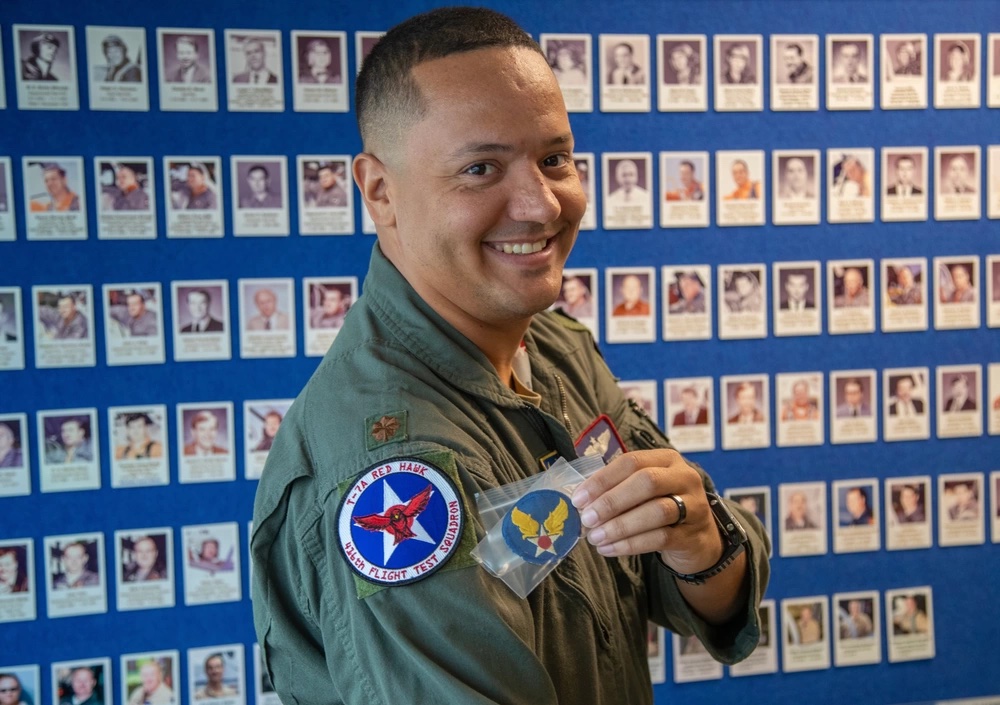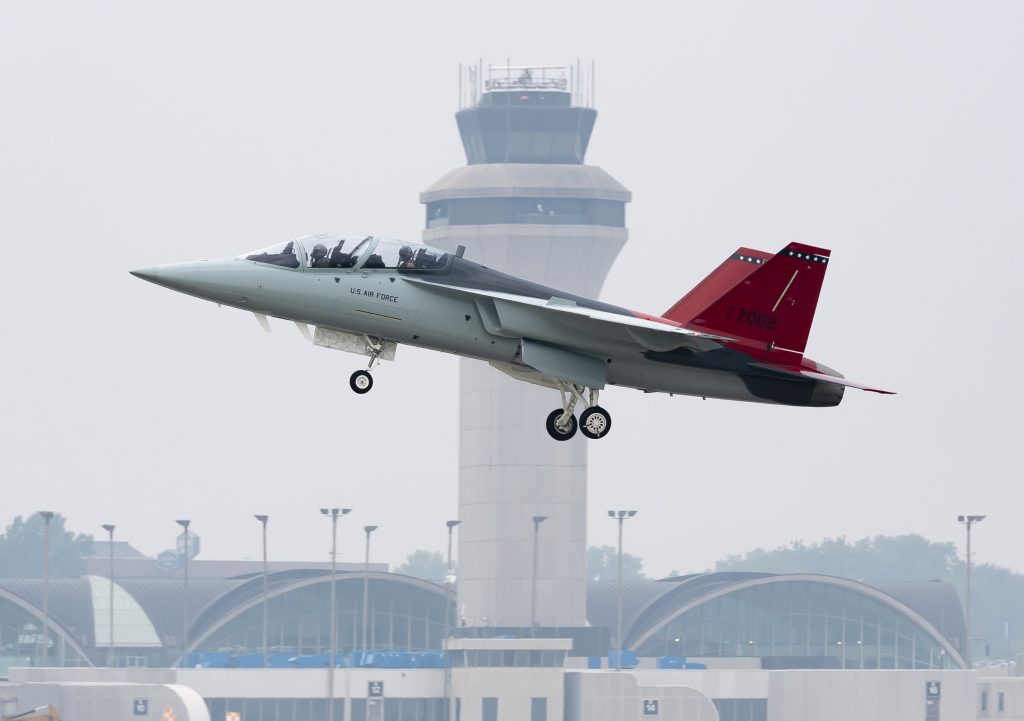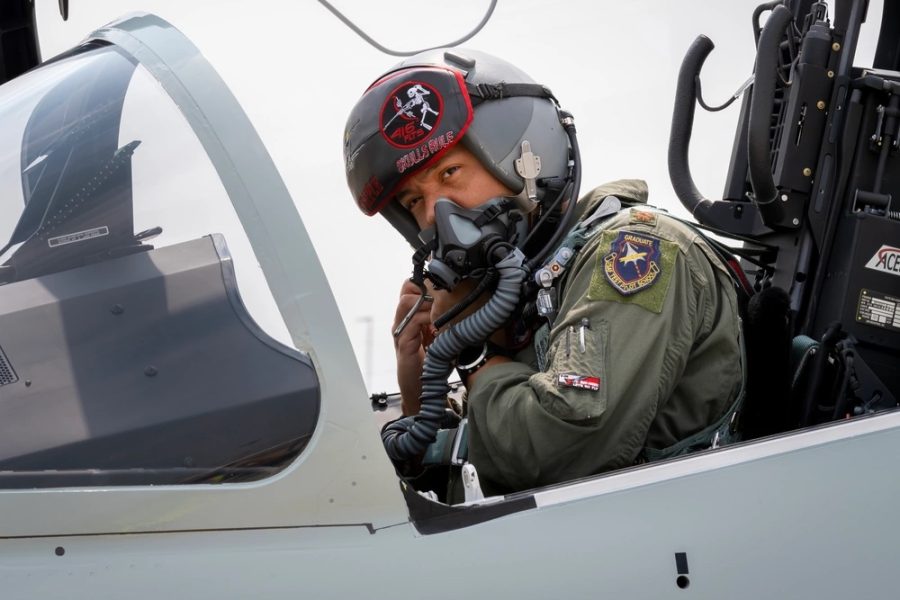Aviation milestones are a family business for Air Force Maj. Bryce Turner, who on June 28 became the first Air Force pilot to take the T-7A Red Hawk on an official test flight. The T-7A is the Air Force’s first new jet trainer in more than half a century. Turner’s flight also marked the latest milestone in a three-generation tradition of Turner family aviation accomplishments.
As described in a recent press release from the 412th Test Wing, the major’s grandfather, retired Lt. Col. Alexander Parker Turner, became one of the first African American jet pilots in 1956, while his father, retired Col. Bryan Turner, was the first African American F-22 pilot.
Maj. Turner was inspired to fly after watching his father perform with the F-16 Viper Demonstration team over Misawa Air Base, Japan, according to the Air Force. He went on to earn a degree in aerospace engineering while participating in the Reserve Officer Training Corps at the University of Virginia. He followed in his father’s footsteps, first by flying the same T-38 training jet tail number which Col. Turner had flown decades earlier, and then by becoming an F-16 pilot just like the colonel had been. At some point along the way, Turner picked up the callsign “Triple” in recognition of his three-generation heritage.

After operational assignments in Korea and Italy, “Triple” completed the U.S. Air Force Test Pilot School and was assigned to the 416th Flight Test Squadron at Edwards Air Force Base, Calif., where the nascent T-7A offered “a chance to apply his aerospace engineering expertise while conducting flight sciences testing,” the press release said.
“The T-7A program combines my engineering problem-solving abilities with the ability to carry on my family’s aviation legacy,” Turner said.
The T-7A is called “Red Hawk” in honor of the “Red Tails” of the Tuskegee Airmen, the group of African American aviators and ground crew who battled both segregation and the Axis during World War II. Two of the last surviving Tuskegee Airmen, an aircraft mechanic named Homer Hogues and a pilot named Raymond Cassagnol died in late June. But the ground-breaking Tuskegee spirit seems to live on in the T-7A, which was designed from the ground up to enable many more “firsts” in the Air Force pilot community.
As previously reported by Air & Space Forces Magazine, the trainer is the first Air Force aircraft designed to accommodate a broad range of body sizes, with the specific intent of making flying slots available to more women. In particular, the ejection seats on previous trainers and fighter aircraft could accommodate only a narrow range of physiques which excluded too many potential student pilots, especially small women.
“The T-7A is breaking barriers by accommodating a broader range of aircrew in terms of cockpit and ejection seat dimensions,” said Turner, whose great aunt was friends with retired Lt. Col. Theresa Claiborne, the first African American female pilot in the Air Force.

The Red Hawk’s development process has not been smooth: the Government Accountability Office wrote in May that the program is already two years behind schedule due to friction between the Air Force and manufacturer Boeing, as well as complications with the ejection seat, software, and flight control issues. The GAO predicted more delays ahead, which would force the Air Force to stretch the life of its 60-year-old T-38 trainers even further.
The Air Force expects to buy 351 T-7As, though the branch does not expect the aircraft to achieve initial operational capability until 2027 (its original target was 2024). Turner seemed to think the aircraft would be worth the wait.
“To the next generation of aviators, I can safely say I am jealous” he said. “This aircraft’s performance, commitment to pilot safety, and ground-based training system is something I could only dream of during my time in flight training. The T-7A performs like a fighter!”
